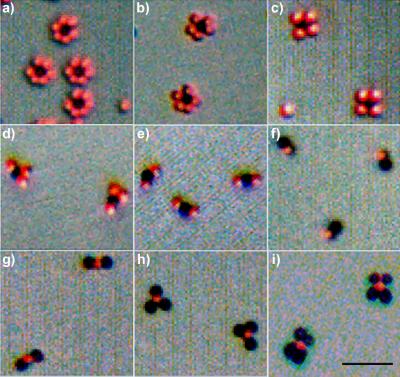A team of researchers from the Duke University has developed a bottom-up approach to self-assemble microscopic particles into larger crystalline structures by altering magnetic fields and concentrations of tiny particles.
 This is a nano-structure (Credit: Benjamin Yellen).
This is a nano-structure (Credit: Benjamin Yellen).
Benjamin Yellen, one of the researchers, informed that the team devised the theoretical foundation for this new method and illustrated over 20 different programmed nano-scale structures in the lab. This new technique paves the way to develop intricate materials, which cannot be synthesized using current methods. The study findings have been reported in the Nature Communications journal.
In this technique, the research team manipulated the magnetization in a liquid solution to coax magnetic and non-magnetic particles to create complex nanostructures such as lattices, rings and chains. The liquid solution called as ferrofluid contains nanoparticle suspensions made of iron-containing compounds. The magnetization of this fluid can be increased by applying external magnetic fields. The particles with higher magnetization than the fluid acted like positive charges, while the particles with lesser magnetization than the fluid acted like negative charges. The attraction between the oppositely charged particles created nanostrucutures that were analogous to salt crystals.
The research team controlled the patterns and shapes of the nanostructures by varying the concentrations of the particles and the magnetization of the ferrofluid. The patterns and shapes of these nanostructures decide their applications, said Yellen.
According to Yellen, these novel nanostrucutres can be utilized in advanced optical devices like sensors wherein various nano-structures with customized optical properties can be fabricated. Yellen also predicts that rings made of metal particles can be utilized for designing antennas and materials, which demonstrate artificial negative magnetic permeability and optical magnetism.
Source: http://www.duke.edu